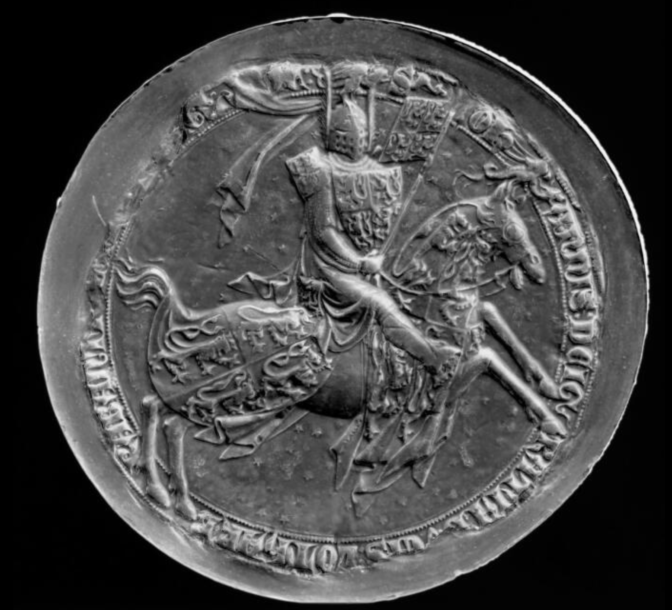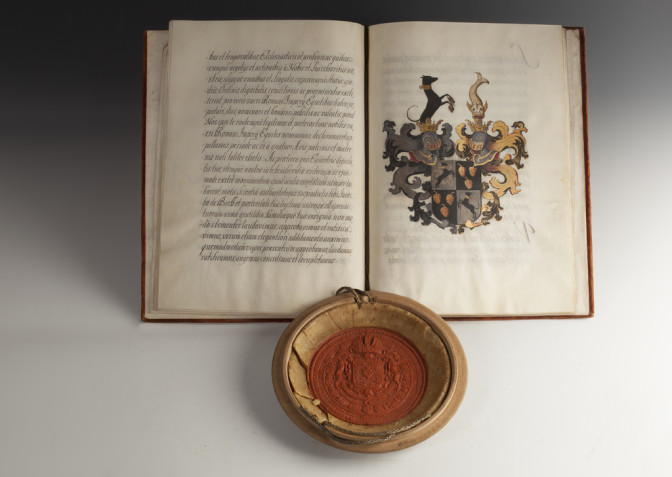A zegel is a seal or stamp.
In the Middle Ages, it became customary to attach a seal to charters as marks of identity and authority. Originally, seals would often show knights on horses. In the 1100s, this was gradually replaced by coats of arms. The following image shows a combination: Duke John II of Brabant is displayed as a knight on his horse, with his coat of arms on his shield, banner, and horse mantling. For examples of medieval seals, see the earliest generations in my Eleanor of Aquitaine series.

Seal of John II of Brabant, 1303
After the end of the medieval period, official records were increasingly created in paper registers. Sometimes, a stamp would be made in wax, but typically, those records would be signed with a signature. To this day, charters are sometimes issued with seals attached. These are usually records of great importance. For more information about heraldry, see also Does my family have a coat of arms?
Zegels were also used on papers, as stamp duty. The government would charge a fee for the creation of certain types of records. Another use of the word zegel is in postzegel, a postal stamp.

Nobility charter of the De Bref family, in the Van Grotenhuis family archives at the Gelders Archief (public domain)

